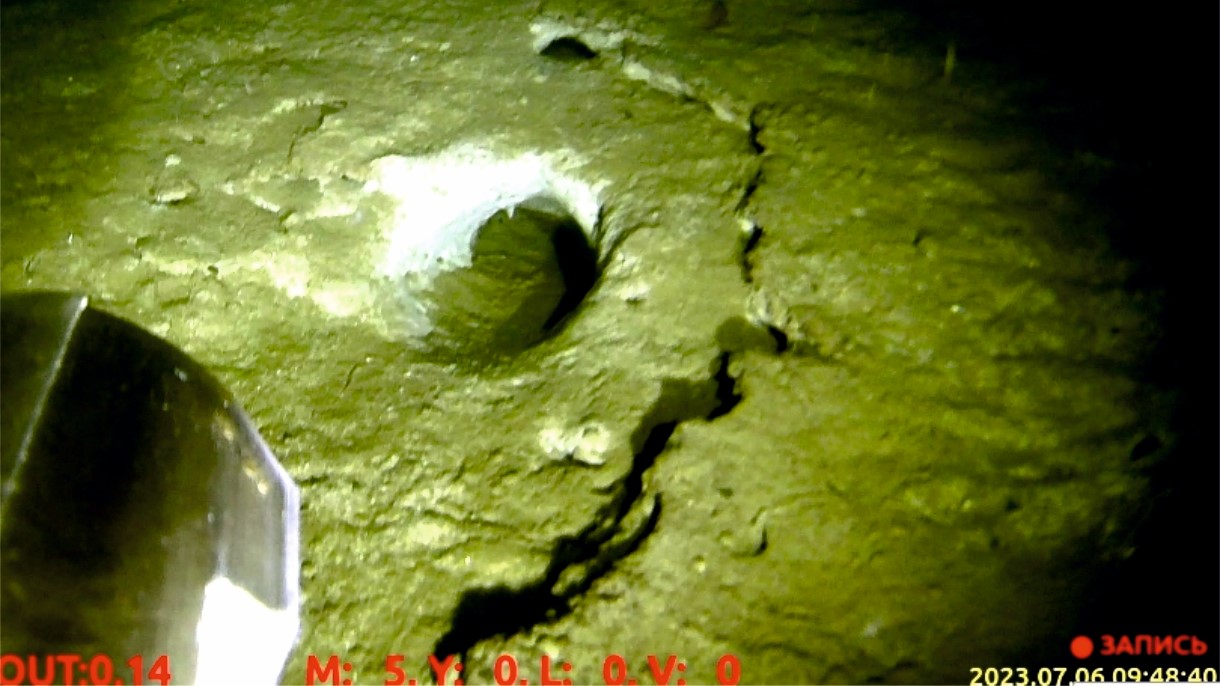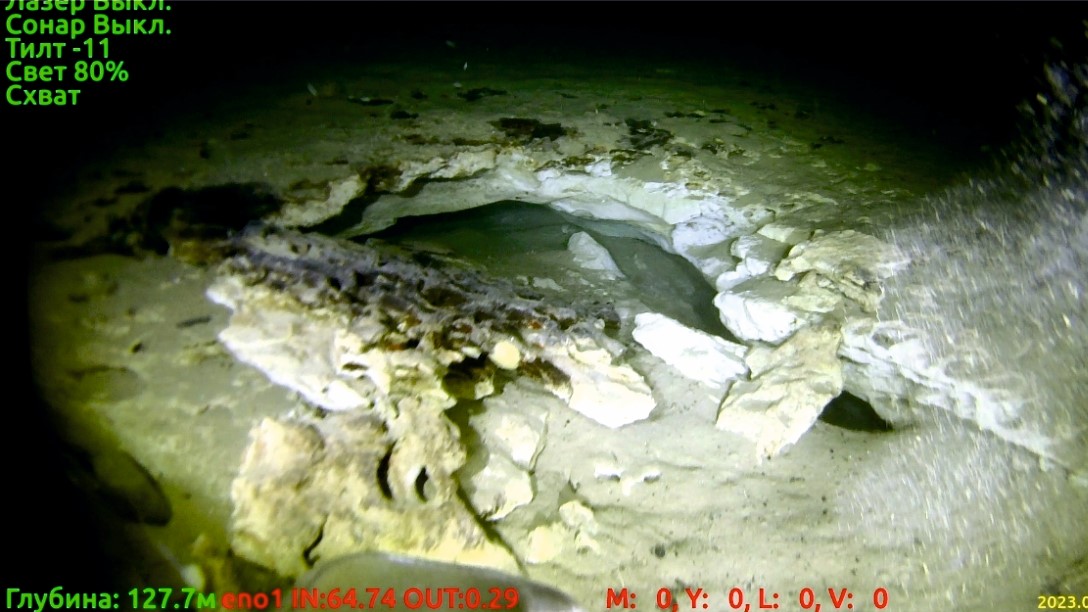Underwater robot in Siberia's Lake Baikal reveals hidden mud volcanoes — and an active fault
Video cameras mounted on an autonomous underwater robot captured footage of cracks associated with mud volcanism close to a potentially active fault on the shores of Lake Baikal.

A robot deployed to the bottom of Siberia's Lake Baikal last summer captured footage of cracks and deformations caused by previously unknown mud volcanoes — and you can watch the discovery in a video below.
The robot discovered scars left behind by eruptions of mud at depths of 340 to 540 feet (100 to 165 meters) in two locations — Malaya Kosa Bay and Goryachinskaya Bay — along the northwestern shore of the lake. Although scientists already knew Lake Baikal harbored mud volcanoes, the latest find sits uncomfortably close to a fault zone known as the Severobaikalsk, or North Baikal fault, which straddles the lakeshore. Signs of recent eruptions at the bottom of the lake could indicate the fault is active.
Mud volcanoes are surface expressions of deeper geological processes and form as a result of slurries and gases erupting from below. Craters along Lake Baikal's northwestern shore "mark cracks that run parallel to the Severobaikalsk fault" and indicate the fault "is alive," according to Oksana Lunina, a structural geologist and chief researcher at the Institute of the Earth's Crust in the Siberian Branch of the Russian Academy of Sciences (SBRAS) who participated in the discovery.
"In the North Baikal depression, which is limited by this fault, there have been strong earthquakes in the past," Lunina said in a translated statement.
The two sites where researchers deployed the robot, or autonomous underwater vehicle (AUV), showed intensely fractured beds blanketed with clay, soft sediments and erupted deposits. In the northernmost Goryachinskaya Bay location, where the footage was taken, craters around 430 feet (130 m) deep were overflowing with a "mud mass," indicating an eruption had occurred recently, according to a study published in October 2023 in the journal Doklady Earth Sciences.
The footage shows layers of rock that were torn and forced up by eruptions of mud and gas-saturated fluids. Boulders appeared to have been "squeezed out" from below, and the dusting of clay and silt on top looked disturbed and porous, the researchers noted in the study.
Sign up for the Live Science daily newsletter now
Get the world’s most fascinating discoveries delivered straight to your inbox.
Deeper in Goryachinskaya Bay, around 525 feet (160 m) below the surface, researchers spotted hundreds of small, cone-shaped craters. "They are everywhere accompanied by brittle deformations of the bottom," they wrote in the study. The vents, which were 2 inches (5 centimeters) tall and across, were teeming with amphipods and gastropods, while nearby hard surfaces hosted colonies of white sponges.

As the AUV traveled to slightly shallower depths, "it became apparent that the entire steep slope was densely covered with mud volcanoes," the researchers added. Mud volcanoes normally wouldn't form at such shallow depths, because they require high temperatures and pressures, Lunina said in the statement.
Mud volcanoes in Lake Baikal are typically fed by gas hydrates, which are crystals of water and gas that form beneath bodies of water. Gas hydrates can become unstable in regions where tectonic processes are at play, due to the additional heat that is created in Earth's crust, Lunina told Live Science in an email.
"But our finding could have another mechanism," Lunina said. Small movements and earthquakes in the Severobaikalsk fault could cause slurries to rise up and erupt through the bottom of Lake Baikal, she said.
These fountains of mud and dissolved gases are unlikely to disturb the lake depths. "It must be a part of the Baikal ecosystem," Lunina said.
Video cameras mounted on the underwater vehicle were operated by study co-author Konstantin Kucher, a researcher at the Limnological Institute in the Siberian Branch of the Russian Academy of Sciences, Irkutsk.

Sascha is a U.K.-based staff writer at Live Science. She holds a bachelor’s degree in biology from the University of Southampton in England and a master’s degree in science communication from Imperial College London. Her work has appeared in The Guardian and the health website Zoe. Besides writing, she enjoys playing tennis, bread-making and browsing second-hand shops for hidden gems.










